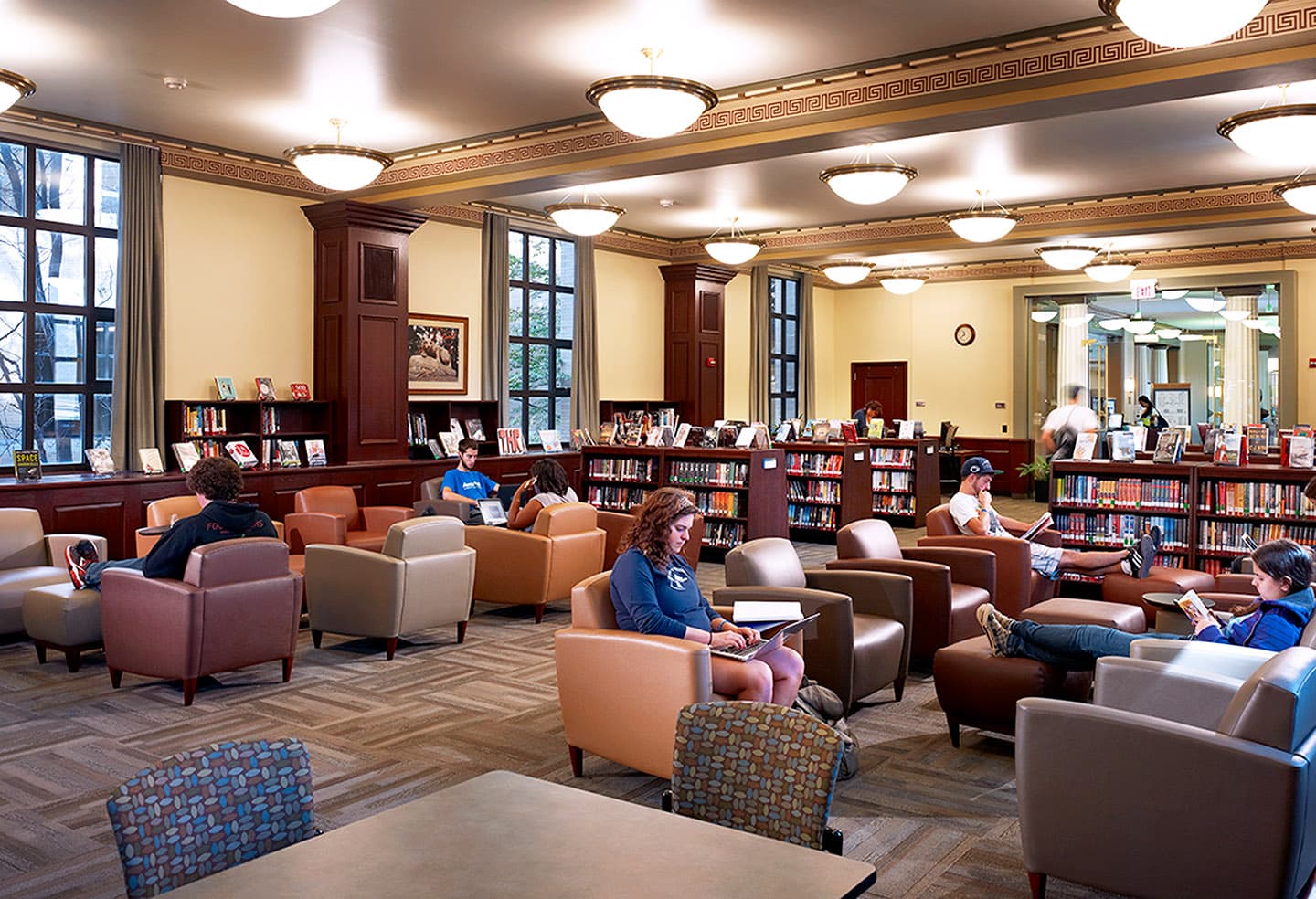

In 1983, as Penn State football coach Joe Paterno was being honored for his first national championship, he gave a speech challenging the university's Board of Trustees to make Penn State number one in academics as well as athletics. It is located in the Farmers' High School Historic District added to the National Register of Historic Places in 1981. Pattee Library is home to the Arts and Humanities Library, Music and Media Center, Library Learning Services, Maps Library, Media Commons, Digitization and Preservation, Course Reserves Services, Disabilities Services, and News and Microforms Library. Another major feature of Pattee, on the second floor, is the Paterno Family Humanities Reading Room, a large reading room reminiscent of historical libraries, and the design was based on images of the New York Public Library legal collections room. In fall 2010, a Reading Room housing the Leisure Reading Collection on the first floor of Pattee Library opened in the Tombros/McWhirter Knowledge Commons.

The Pattee Library includes the circulation area for both libraries, which connects the original mall entrance with the Curtin Road entrance. A renovation which included the construction of the Paterno Library began in 1998, and was completed in 2000. The "Stacks" or Stack Building was added in 1953, "West Pattee" in 1966, and "East Pattee" in 1973. Between 19, the library was expanded three times. Pattee Library was built as part of a Public Works Administration-General State Authority project. Pattee Library is named for Fred Lewis Pattee, regarded as the first professor of American Literature (1895–1928) and author of the Penn State Alma Mater. Today, there are 14 libraries at the University Park campus alone, and the Libraries boast a collection of more than 5.4 million volumes.


The Pattee Library was renovated in the late 1990s, and in 2000, it was rededicated along with the new Paterno Library, a portion of which comprises the former East Wing of Pattee. By the 1960s, the collection had grown to 800,000 books. The library was permanently moved to the Pattee Library building. In 1904, the library was moved to the Carnegie Building (then "Carnegie Library"), which provided a 50,000 book capacity.īy 1940, the library's collection had grown to 150,000, overcrowding Carnegie by three times its capacity. The library's first permanent location was in Old Main, with 1,500 books in agriculture and the sciences. The two main buildings on Penn State's University Park campus are the Pattee and Paterno libraries. The Penn State University Libraries consists of 36 libraries at 22 locations in the Commonwealth of Pennsylvania.


 0 kommentar(er)
0 kommentar(er)
